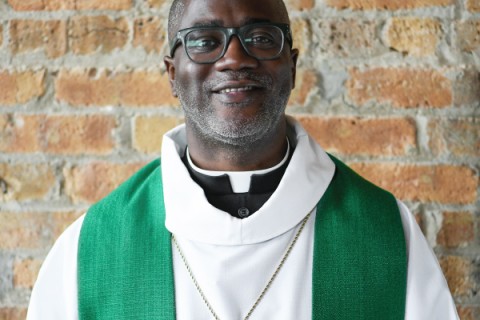Alternative universe: Under John Paul, the church as a total culture
Where were you on the day John Paul II died? I won’t soon forget, for I was caught in a looking-glass world of improbable encounters and reactions. A friendly neighbor dropped by to deliver his boy for a play date with our son Andy. “Did you hear the pope is dying?” (Yes, I did.) “Can’t see why such a fuss is being made about him.” (I can. I love this pope.) “What did he ever do except apologize to the Jews?” (If that were all, we should have been content.) “He had the chance to do a Gorbachev.” (True, but he helped trigger the downfall of communism in Eastern Europe and planted hope in millions of hearts.) “My wife said he was good-looking in his youth.” (Yes, he was quite dashing: an actor, athlete, playwright, poet, who as a young priest took his flock skiing and camping, and gave them advice on their romantic lives.) “Must have gotten a lot of babes when he was pope, then.” At this point it seemed best to change the subject.
The throngs of pilgrims in St. Peter’s Square were worlds away, and I felt like singing Judah Halevi’s verse, “My heart is in the east, and I in the utter west.” Later on I found out that the pope had died while I was engaged in this bizarre conversation.
The day after the pope’s funeral, I overheard a conversation touching on the same subject, though from a decidedly different angle, in the hair salon. A customer remarked, “Isn’t it strange how oblivious some people are to what’s going on in the world around them?” “Yes, isn’t it?” I heard the hairdresser agree. “Even people who should know better,” the customer continued. “Why do you think Prince Charles and Camilla had to postpone their wedding again? It was Mercury retrograde! Of course the pope was going to die and the wedding was going to have to be put off again. Mercury retrograde! I could have told them that!”
How many alternate universes must there be, if my neighborhood is so chock-full of them? Yet these extreme examples only highlight a pervasive problem. It is nearly impossible to understand a religious worldview from outside. The act of understanding requires that a border be crossed, a barrier dropped, an inhibition dissolved, a preconceived explanation abandoned, the armor of irony and suspicion cast off; only then can one consider seriously what the world looks like from another believer’s vantage point. Lack of sympathy is fatal, and presence of sympathy can quickly correct a host of errors.
Television reporters who covered the great pilgrimage to St. Peter’s Square during the illness, death and funeral of John Paul II were genuinely moved (not merely, as Rush Limbaugh said, flummoxed) by this spectacle of faith and fervor. As a result, a door opened, and for a blissful time the tired old categories of liberal and conservative fell away. A view from within became possible. It became evident that to the pilgrims in the square, the life and death of John Paul II was a thing that made cosmic sense; that to their eyes he was the youthful, vigorous, self-sacrificing and fundamentally joyful pope who proposed hope in Christ as the real answer to tyranny, defended the dispossessed, worked to restore communion between the separated branches of the Christian family, transformed the relationship between Catholics and Jews, made a cogent case for the harmony of faith and reason, and became at the end of his life the image of the Suffering Servant, bearing witness to the conviction that life is meaningful even at its moment of utmost weakness.
As I write, the conclave to elect a new pope is in session. By the time you read this, the issue will have been decided. Learned commentators will be making their observations about why the papal election was so predictable—and why it was so surprising. But the prospects for fruitful dialogue in and beyond the Christian world will depend to a great extent on whether the door that opened in April in St. Peter’s Square remains open, permitting a view from within.
What the pilgrims loved in John Paul II and will be looking for in his successor is not a checklist of answers to hot-button questions, but a personal witness to the gospel. What they valued in the past pontificate and will be looking for in the present one is a sense of the church as a total culture, a coherent living tradition—an alternate universe, if you will, in which things make cosmic sense.
Memory and Identity, the last book published by John Paul II, takes the view that there is “a limit imposed upon evil” by divine mercy; that “Christ cannot be separated from human history”; and that “all human suffering, all pain, all infirmity contains within itself a promise of salvation, a promise of joy.” Thus he made sense of the terrors of modern history, the challenges of moral life, and his own physical deterioration. Viewed from within, it’s not a Gorbachev one looks for in St. Peter’s Square, but a good shepherd; not Mercury retrograde, but Venus, the daystar, herald of the rising sun.




